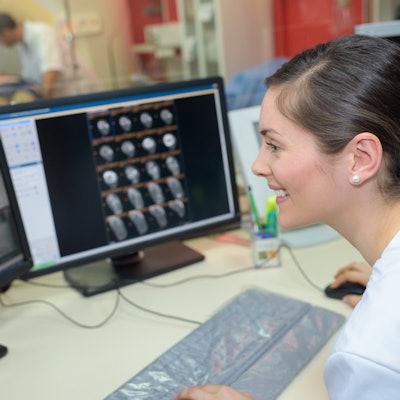
Radiologists top the list of medical specialists using telemedicine for interactions with patients and other healthcare providers, according to a report published in the December issue of Health Affairs.
Carol Kane and Kurt Gillis, both of the American Medical Association (AMA) in Chicago, used data from the AMA's 2016 Physician Practice Benchmark Survey to calculate telemedicine use across a variety of specialties (Health Affairs, December 2018, Vol. 37:12, pp. 1923-1930).
Overall, in 2016, 15.4% of physicians worked in practices that used telemedicine for patient interactions, ranging from e-visits to video conferencing to remote patient monitoring, and 11.2% used it for interactions with other healthcare professionals. Larger practice size correlated with higher telemedicine use, Kane and Gillis noted; they theorized that this was an indication that smaller practices faced a financial burden to implementing telemedicine.
By specialty, radiology was the top telemedicine user for physician-to-patient interactions.
| Top 5 medical specialties using telemedicine | |
| Medical specialty | Physician-to-patient telemedicine use rate |
| Radiology | 39.5% |
| Psychiatry | 27.8% |
| Cardiology | 24.1% |
| Pathology | 23% |
| Emergency medicine | 22.3% |
As for using telemedicine for interactions between physicians and other healthcare providers, emergency medicine had the highest use rate, at 38.8%, followed by pathology at 30.4%, radiology at 25.5%, ophthalmology at 14.9%, and neurology at 14.3%.
Within radiology, the researchers found that 42.7% of radiology interactions with telemedicine were classified as "store and forward" of medical data. Video conferencing made up 17% and remote patient monitoring made up 9.7%.
"Telemedicine has the potential to increase access to care, improve the quality of care provided, and reduce healthcare costs," Kane and Gillis wrote.




















